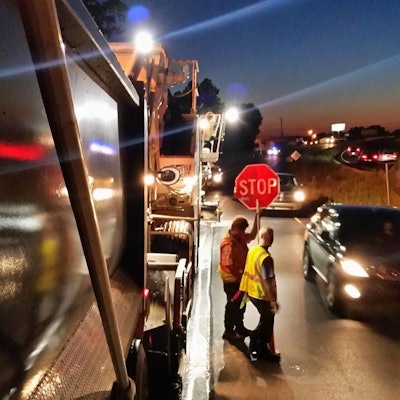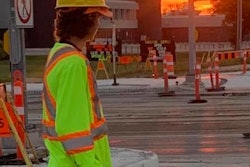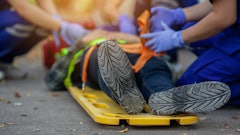
Building and maintaining roads can be a dangerous business. We do all we can to keep our crews safe, but it only takes a momentary distraction for a car or truck to cross into a work zone, causing an accident. As a result, over 3,300 people — including an estimated 650 construction workers — have been killed nationally in work zone crashes over the past five years. In addition, more than 35,000 people annually are injured at these work sites.
According to government data, distracted driving was directly to blame for at least 500 of those deaths and who knows how many of the injuries. The National Highway Transportation Safety Alliance (NHTSA) estimates that during daylight hours, approximately 481,000 drivers are using cell phones while driving. That creates enormous potential for deaths and injuries on U.S. roads and the danger only increases when drivers enter unfamiliar work zones.
And this is why we really need the support of the drivers entering our work zones in order to enact lasting change.
Deter Distracted Driving
In order to stop unsafe behavior, drivers first need to be aware of what activities they're doing create unsafe conditions. Distracted driving is any activity that diverts attention from driving, including talking or texting on your phone, eating and drinking, talking to people in your vehicle, fiddling with the stereo, entertainment or navigation system—anything that takes your attention away from the task of safe driving.
Texting is the most alarming distraction. Sending or reading a text takes your eyes off the road for 5 seconds. At 55 mph, that's like driving the length of an entire football field with your eyes closed. Drivers should never pick up their phone to text while driving, but especially not in a work zone where there are vulnerable human beings just trying to do their job.
With today's technology inside vehicles, there is almost no reason to pick up your phone as many cars can read texts and reply to them hands-free. If you don't have this tech in your vehicle, for everyone's sake, please put your phone in the glove compartment until you park your car.
We can all play a part in the fight to save lives by ending distracted driving. Parents first have to lead by example—by never driving distracted—as well as have a talk with their young drivers about distraction and all of the responsibilities that come with driving. Have everyone in the family sign the pledge to commit to distraction-free driving. Remind your teen driver that in states with graduated driver licensing (GDL), a violation of distracted-driving laws could mean a delayed or suspended license. Teens should spread the message to their friends as well. Every commitment helps.
Lay Down the Law
With the number of work zone deaths not decreasing year over year, many feel it’s time we start to increase legislation and repercussions for those who violate cell phone bans while driving and look to ways to increase those bans through work zones.
Did you know that not one state in the United States bans all cell phone use for all drivers? We suppose that would be too much to ask. Yes, 47 states have a text messaging ban while driving, but only 16 states prohibit drivers from using hand-held cell phones while driving. Let’s be honest, if you can pick up the phone to make a call while driving, you’re probably also going to be texting.
Your state legislature and governor are the ones who make the laws regarding distracted driving. If you feel strongly about distracted driving, be a voice in your community by supporting local laws, speaking out at community meetings and highlighting the dangers of distracted driving on social media and in your local op-ed pages.
NWZAW 2019
For the last 20 years, National Work Zone Awareness Week (NWZAW) has become an annual spring campaign held at the start of construction season to encourage safe driving through highway work zones. The key message is for drivers to use extra caution in work zones.The awareness week is shared nationwide and each year a state department of transportation (DOT) hosts a kickoff event for NWZAW. This year’s national kick-off event is taking place in Washington, D.C., hosted by the District Department of Transportation (DDOT), on April 9, 2019. The kickoff event will be held at the Frederick Douglass Memorial Bridge at 11 a.m.
In addition, all roadway safety professionals across the country are encouraged to wear orange to proudly show their support of work zone safety for Go Orange Day on Wednesday, April 10th, 2019. Go Orange Day and NWZAW is an important time to show your support of the roadway safety industry, especially to the families of victims who have lost their lives in work zones.
Let's not limit work zone safety to one week. Keep the importance of the safety of our construction workers top of mind year round.



















